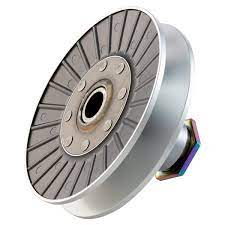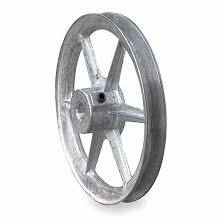Product Description
Yamamoto Motorcycle Spare Parts Clutch Assy.
| order code | motorcycle model |
| 1375616 | YMH-100(K120) |
| 1375623 | ZY125(K140) |
| 1376841 | JOG50 |
| 1380767 | SPACY100 |
| 138571 | PREESE125 |
/* January 22, 2571 19:08:37 */!function(){function s(e,r){var a,o={};try{e&&e.split(“,”).forEach(function(e,t){e&&(a=e.match(/(.*?):(.*)$/))&&1
| Type: | Clutch |
|---|---|
| Material: | Aluminium Alloy/Aluminum |
| Certification: | ISO9001:2001, CCC, SONCAP, UL, CE |
| Samples: |
US$ 40/Piece
1 Piece(Min.Order) | Order Sample |
|---|
| Customization: |
Available
| Customized Request |
|---|
.shipping-cost-tm .tm-status-off{background: none;padding:0;color: #1470cc}
| Shipping Cost:
Estimated freight per unit. |
about shipping cost and estimated delivery time. |
|---|
| Payment Method: |
|
|---|---|
|
Initial Payment Full Payment |
| Currency: | US$ |
|---|
| Return&refunds: | You can apply for a refund up to 30 days after receipt of the products. |
|---|
What is the significance of proper alignment and tensioning in drive pulley systems?
Proper alignment and tensioning are critical factors in the performance and longevity of drive pulley systems. They play a significant role in ensuring efficient power transmission, reducing wear and tear, and preventing premature failures. Here’s a detailed explanation of the significance of proper alignment and tensioning:
Alignment:
Proper alignment refers to the correct positioning of the drive pulleys in relation to each other and other system components, such as belts, shafts, and bearings. It is crucial for the following reasons:
- Efficient Power Transmission: Misaligned pulleys can cause the belts to run at an angle, resulting in increased friction and energy loss. This inefficiency can lead to reduced power transmission and decreased overall system performance.
- Reduced Wear and Tear: Misalignment puts excessive stress on the belts, pulleys, and other components. This can lead to accelerated wear and tear, resulting in increased maintenance and replacement costs. Proper alignment helps distribute the load evenly, minimizing stress and extending the lifespan of the components.
- Prevention of Belt Slippage: Misalignment can cause belts to slip or derail from the pulleys, leading to a loss of power transmission and potential damage to the belts. Proper alignment ensures that the belts remain securely engaged with the pulleys, preventing slippage and maintaining reliable operation.
- Optimal Belt Tracking: Correct pulley alignment helps maintain proper belt tracking, ensuring that the belts stay centered on the pulleys and run smoothly. This prevents the belts from rubbing against the pulley edges or adjacent components, reducing friction and minimizing the risk of belt damage.
Tensioning:
Proper tensioning refers to the appropriate adjustment of belt tension in drive pulley systems. It is crucial for the following reasons:
- Optimal Power Transmission: Adequate belt tension is necessary for efficient power transmission. Insufficient tension can result in belt slippage, reducing the transfer of power from the drive pulley to the driven pulley. On the other hand, excessive tension can overload the system, leading to increased wear and power losses.
- Maintaining Belt Grip: Proper tensioning ensures that the belts maintain sufficient grip on the pulleys, especially when transmitting high torque or operating under heavy loads. This prevents belt slippage and ensures reliable power transfer.
- Prevention of Belt Damage: Improper tensioning can cause excessive stress on the belts, leading to stretching, cracking, or premature failure. By maintaining the correct tension, the risk of belt damage is minimized, resulting in longer belt life and reduced downtime.
- Reduced Noise and Vibration: Inadequate tensioning can cause belts to vibrate or produce noise during operation. Proper tensioning helps dampen vibrations, resulting in smoother and quieter system performance.
Overall, proper alignment and tensioning are essential for optimizing the performance, reliability, and longevity of drive pulley systems. They contribute to efficient power transmission, reduced wear and tear, prevention of belt slippage, and minimized maintenance costs. Regular inspection and adjustments should be performed to ensure that the drive pulley system remains properly aligned and tensioned throughout its operation.
What maintenance procedures are necessary to ensure the reliability of drive pulleys?
Proper maintenance procedures are essential to ensure the reliability and longevity of drive pulleys. Regular maintenance helps identify and address potential issues before they escalate, minimizing downtime and preventing costly breakdowns. Here are some important maintenance procedures for drive pulleys:
1. Visual Inspection:
Perform regular visual inspections of the drive pulleys to check for any signs of wear, damage, or misalignment. Look for cracks, chips, or excessive wear on the pulley surface. Inspect the pulley hub and keyway for any signs of damage or corrosion. Ensure that the pulley is properly aligned with the drive shaft and other components. If any abnormalities are detected, further investigation or corrective action may be necessary.
2. Lubrication:
Follow the manufacturer’s guidelines for lubrication to ensure smooth operation of the drive pulley. Lubrication reduces friction and heat, preventing premature wear and extending the pulley’s lifespan. Apply the recommended lubricant to the pulley bearings or bushings as per the specified intervals. Ensure that the lubricant used is compatible with the pulley material and operating conditions.
3. Tension and Belt/Chain Alignment:
Check the tension of the belts or chains connected to the drive pulley regularly. Incorrect belt or chain tension can lead to slippage, reduced power transmission efficiency, and accelerated wear on the pulley and associated components. Follow the manufacturer’s guidelines or consult the equipment manual for the appropriate tensioning procedures. Additionally, ensure proper alignment between the pulley and the driven components to prevent excessive side loading or belt/chain misalignment.
4. Cleaning:
Keep the drive pulleys clean and free from debris, dust, or contaminants. Regularly remove any accumulated dirt, debris, or residue from the pulley surfaces and grooves. Use appropriate cleaning methods and tools, such as brushes or compressed air, to ensure thorough cleaning without causing damage to the pulley or its components. Clean pulleys help maintain proper belt traction and reduce the risk of slippage.
5. Belt/Chain Maintenance:
In addition to maintaining the drive pulleys, proper maintenance of the belts or chains connected to the pulleys is crucial. Inspect the belts or chains for signs of wear, damage, or stretching. Replace worn-out or damaged belts or chains promptly to prevent adverse effects on the drive pulley’s performance. Follow the manufacturer’s guidelines for belt or chain tensioning, alignment, and replacement intervals.
6. Balancing:
Imbalance in the drive pulley can result in vibration, increased stress on the pulley and associated components, and reduced overall system performance. Periodically check the balance of the drive pulley and take corrective measures if necessary. Balancing may involve the use of specialized equipment or consulting a professional service provider to ensure proper balancing and smooth operation.
7. Record-Keeping:
Maintain accurate records of maintenance activities performed on the drive pulleys. This includes recording inspection dates, lubrication schedules, belt or chain replacements, and any corrective actions taken. Proper record-keeping helps track maintenance history, identify recurring issues, and ensure compliance with maintenance schedules and recommendations.
8. Professional Inspection:
Consider engaging a qualified professional or a service provider for periodic inspections and maintenance of drive pulleys, especially in complex or critical applications. Professionals can perform more detailed assessments, identify potential issues, and provide expert recommendations to ensure the reliability and optimal performance of the drive pulleys.
In conclusion, regular maintenance procedures are necessary to ensure the reliability of drive pulleys. Visual inspections, proper lubrication, tension and alignment checks, cleaning, belt/chain maintenance, balancing, record-keeping, and professional inspections all contribute to the longevity and optimal operation of drive pulleys, reducing the risk of failures and improving overall system reliability.
What types of belts or cables are typically employed with drive pulleys?
Drive pulleys are commonly used in conjunction with various types of belts or cables to facilitate power transmission and motion control in mechanical systems. The choice of belt or cable depends on the specific application, load requirements, environmental conditions, and desired performance characteristics. Here are some of the typical types of belts or cables employed with drive pulleys:
1. V-Belts:
V-belts are a common type of belt used with drive pulleys. They have a trapezoidal cross-section that fits into the V-shaped groove of the pulley. V-belts are made of rubber or synthetic materials and are reinforced with cords or fibers to provide strength and flexibility. They are known for their high friction grip and are suitable for moderate power transmission applications. V-belts are widely used in industrial machinery, automotive engines, and other systems that require reliable power transmission.
2. Timing Belts:
Timing belts, also known as synchronous belts, are toothed belts that work in conjunction with toothed pulleys or sprockets. The teeth on the belt mesh with the grooves on the pulley, allowing for precise and synchronous power transmission. Timing belts are commonly made of rubber or polyurethane, reinforced with cords or fibers for strength. They are used in applications that require accurate positioning, such as in engines, robotics, and precision machinery.
3. Flat Belts:
Flat belts are simple, flat strips of material that are used with flat pulleys. They are usually made of rubber, leather, or fabric-reinforced materials. Flat belts offer flexibility and are suitable for applications that require high-speed power transmission. They are commonly used in light-duty machinery, such as printers, textile machines, and some conveyor systems.
4. Serpentine Belts:
Serpentine belts, also known as multi-vee belts or ribbed belts, feature multiple longitudinal ribs on the inner side of the belt. They are used with pulleys that have matching grooves to provide increased surface contact and improved power transmission efficiency. Serpentine belts are commonly used in automotive engines to drive multiple accessories such as the alternator, power steering pump, and air conditioning compressor.
5. Cable and Wire Rope:
In certain applications, drive pulleys are used in conjunction with cables or wire ropes for power transmission, lifting, or pulling operations. Cables and wire ropes are made of multiple strands of metal wires twisted or braided together to provide strength and flexibility. They are commonly used in cranes, winches, elevators, and other heavy-duty lifting or pulling equipment.
6. Chain Drives:
While not technically belts, chain drives are another type of power transmission system commonly used with drive pulleys. Chains consist of interlocking metal links that engage with sprockets on the pulleys. Chain drives are durable, capable of handling high loads, and suitable for applications that require high torque transmission. They are commonly used in motorcycles, bicycles, industrial machinery, and conveyors.
7. Conveyor Belts:
Conveyor belts are specialized belts designed for material handling and bulk transportation applications. They are used with drive pulleys in conveyor systems to transport goods, packages, or materials. Conveyor belts are typically made of rubber or fabric-reinforced materials and can be customized with various surface patterns or cleats to suit specific applications, such as inclines, declines, or sorting operations.
These are some of the typical types of belts or cables employed with drive pulleys. The selection of the appropriate belt or cable depends on factors such as the power requirements, speed, accuracy, environmental conditions, and load capacity of the system.
editor by CX
2024-05-09




